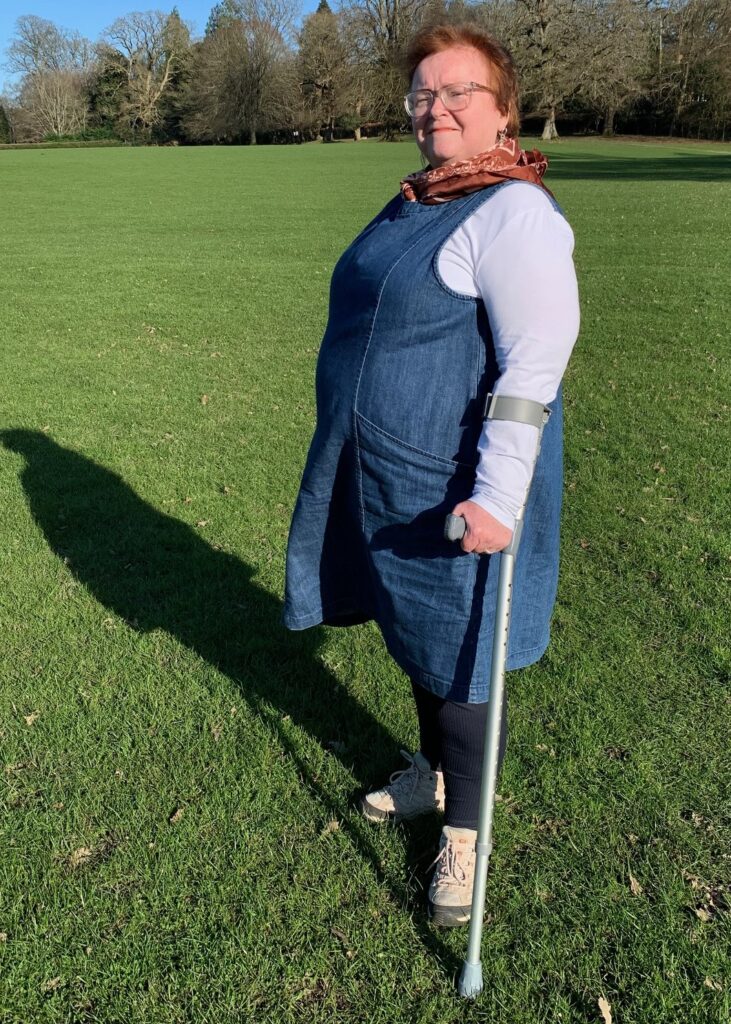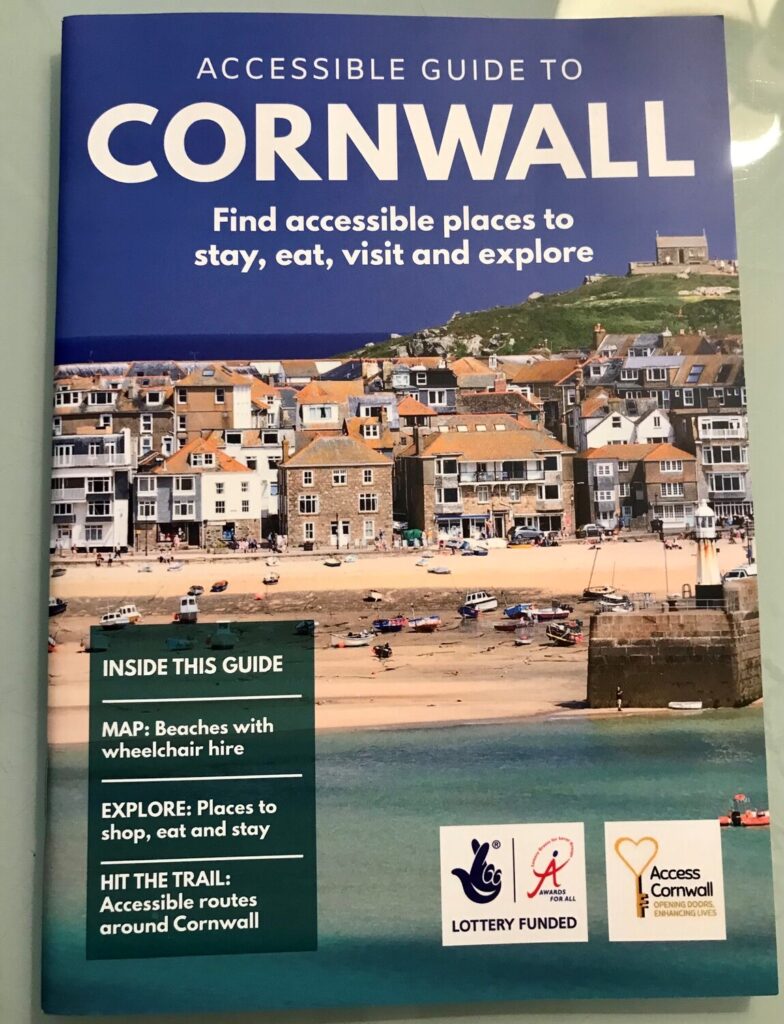An image tells a thousand words right? Well this one tells a lot.

It says ‘yey’ I am in the New Forest National Park Authority. Green space. Skies. Nature. Restorative. Tick.
It says I’m fat. I am indeed fat and fifty (plus) not fit and fleecy. We need more images like this from the outdoors world.
It says thank you to Hennes and Seasalt for recognising that bigger people go outside too – high street is ahead of the curve(s) on decent outdoor kit for people who are larger than national average (which is size 16/18 BTW).
It says thank you to the NHS for the stick. And for the care.
It says disabled. Because however you define the word I currently am. There is another piece to fall out from this – on how we view disability as a fixed state. When so often it is transient in both its impact and scope.
And if you look closely it says pain. Searing pain. From a woman with a stupid high pain threshold. Smiling yes. I had walked 100 metres. Such a success. But crying five minutes later in sheer pain and frustration.
This isn’t a woe’s me. It is what it is.
My husband is the brains behind Walking Pace and has always been an access champion. And the architect of YHA Walks. He is an experienced hill and long distance walker. As was I (once upon a past). But having a wife who can sometimes only just make it across the car park while our kids can run for miles has meant we have both had to think differently about walking.
I recently got a sponsored post from Ramblers encouraging people to join their local groups. And I would definitely advocate for the brilliance of the charity – their work with YHA has been great. But an observation. Where people had responded about loving walking or their favourite walk the Rambler social medial team had responded with enthusiasm. But when people had engaged with the post saying that they felt too fat to walk, or had osteoporosis, or struggled with distance – the response was noticeable by it’s absence. Access is more than (the brilliant) ‘miles without stiles’. It is about an attitude that says walking is for all. That short is fine. That yes – walking can help you lose weight or get fit but it is more than just having a utilitarian purpose. It is fine to go walking, even if a short distance and without targets of weight or distance in mind. It may be that Ramblers don’t see the unfit and short distance walkers as part of their community – which is fine. It certainly felt to me like at the moment I wouldn’t be safe there.
Rather the post and my experiences made me think about the five things that helped me most.
1. Benches. Please do more benches. When the going gets tough the art is not to give up – rather to rest. Pain is exhausting. Sitting down for a brief period relieves pain and allows you to start again. Have more benches. Preferably with view.
2. Notice. Don’t make people ask for help. The stick helped people notice. But I was so grateful to those organisations who noticed and – without fanfare – told me what they could to help. A excellent National Trust volunteer showed me where benches were and told me if got stuck they could send someone to bring me up the hill. Just knowing that was an option meant I was brave enough to go further. Cornish Seal Sanctuary automatically called the ‘golf buggy man’ to take me down the steep hill (cue requests from kids and husband for golf buggy at home).
3. Know that ‘easy’ is relative. So when asking for guidance on short walks – or on access to beaches – most people started from where their ability was. So the 10 mile yompers gave me details of ‘easy’ 3 mile walks or ‘accessible routes’ where I ‘only’ had to navigate 10 stairs to beach. One Cornish shop keeper though directed me to a beach without stepped access where the car park was only metres from the sand.
4. And that longer, higher, harder isn’t the only way to enjoy landscapes. While we have a long way to go we are getting much better on guidance for wheelchair and wider disability access (love this from Access Cornwall).
However, we still tend to work from an assumption that everyone wants to do longer, higher, harder. When in fact bimbles, driving to the sand and then sitting on it or getting bus to see view of a pony are all activities of equal worth (and ends in their own right rather than stepping stones to something else).

5. Know that some people aren’t ‘we’ they are ‘I’. These are things that I learnt while ‘we’ were on the road. I was lucky enough to be able to take my husband and kids with me while working away. Without this I would have been unable to go. Both in a practical sense – driving, carrying, catching me. But also because pain and being unsteady is scary and miserable. Very scary sometimes. What can we, as the tourism and charity sector, do to support those whose pain or disability makes it that much harder to do things alone?
A wise person said to me that we all become disabled. And in truth most of us will – with age, with illness, by accident. And of course the best way to address that is to create a world that is accessible to all – at all levels. To be considerate. To support. And where we cannot make easy adaptations to physical environments (listed building floors in the castle) how can we make small adjustments that give people a fighting chance (the hand rail I could lean against). Rather than making people ask for help how can we just make things available (like walking poles being available to borrow at National Trust.)
And – did I mention benches?



